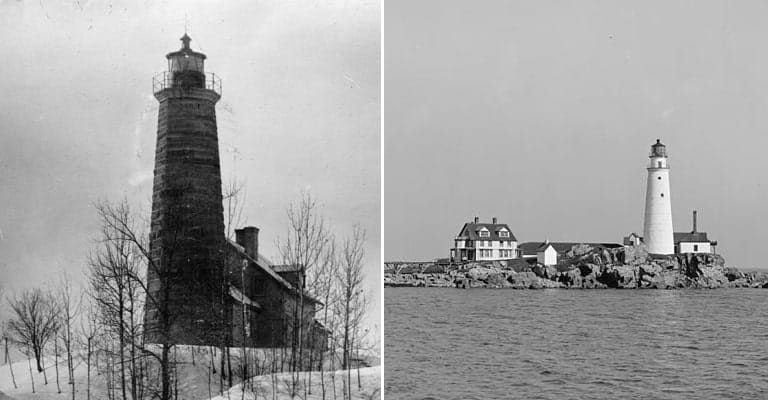Lighthouses hold an almost mystical position in the lore of the sea. Throughout history they have been used to guide ships to safety or to lure them to their doom at the hands of pirates and ship wreckers. Many are claimed to be haunted by the shades of their victims or their operators. They date to ancient times. The Greek fabulist Homer wrote of Palamedes of Nafplio being the inventor of the device, though his account is likely more legend than fact. Drawings and written descriptions of the Pharos of Alexandria shed light, as it were, on the existence of the structures two or more centuries before the dawn of the Common Era, and indicate that the need to guide mariners through dangerous waters was addressed by the ancient Egyptians, Phoenicians, and Greeks, as well as the Romans and others.

Ruins of Roman lighthouses erected in the British Isles allow researchers to determine they were often little more than a tower topped with a fire, kept burning through the night by keepers. Through the Middle Ages and the Renaissance lighthouses became more complex, with glass windows to protect the flames from the wind. Glass was an expensive and rare commodity, making the construction and maintenance of lighthouses a project for the Royal purses of Europe, or investors with deep pockets. As Western European nations competed for colonial control of the New World, lighthouses emerged along America’s jagged coastline, marking shoal water, contrary currents, and the entries to the many bays and inlets. Lighthouses are still a primary marking point for mariners, even in the days of radar and global positioning systems they offer a reassuring visual for sailors.
Here are some tales of famous lighthouses of history, some of them factual, and others legendary, which have been handed down through the generations.

1. Hook lighthouse was built for both for safety and advertising
Hook lighthouse, which stands on Hook Head in County Wexford, Ireland, is the second oldest operating lighthouse in the world, built in the 12th century by an enterprising nobleman named William Marshall, Earl of Pembroke. The Earl had established a seaport facility at the town of New Ross, approximately 18 miles up the River Barrow. The lighthouse which the Earl had erected thus served as a warning to seamen of the proximity of shoals and rocks, and as a guide to the entrance of the river leading to a port at which they could exchanges their goods. The exact date of its construction is uncertain, but maps note its existence as early as 1240. It is believed that the tower and its supporting buildings were erected by monks, and that the monks operated the lighthouse for several centuries following its construction, as well as operating the warning guns which were fired at ten minute intervals during fog conditions as a warning to mariners.
The lighthouse used a coal lantern for illumination until the late 18th century, when it was replaced with a lantern which burned whale oil, which produced a flame both brighter and cleaner. The whale oil lantern was actually a ring of twelve individual lanterns. The lighthouse was converted to gas during the 19th century, then paraffin, and finally electrical illumination. The original mechanism installed to make the lantern flash rather than burn steadily was hand wound, the light keeper on duty was required to rewind the mechanism every twenty-five minutes. The lighthouse keepers resided in three houses erected near the base of the tower until the system became fully automated, operated remotely, in 1996. The fog guns were replaced by fog horns, which by the 1990s were considered to be no longer necessary for safe navigation. The beacon still shines forth at night, but the primary purpose of Hook Light in the twenty-first century is as a tourist attraction.

